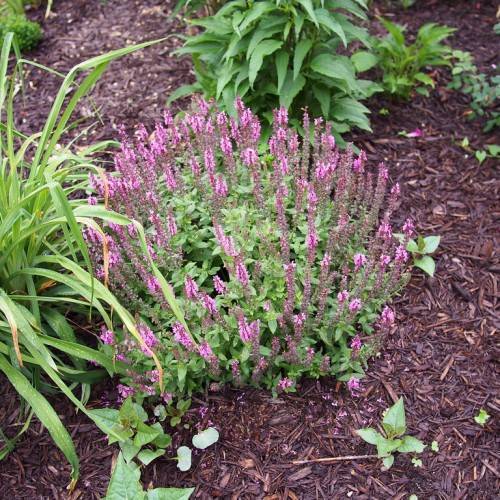
sage
Salvia nemorosa 'Sensation Rose'
Cycle:
Herbaceous Perennial
Watering:
Minimum
Hardiness Zone:
4 - 8
Flowers:
Flowers
Sun:
Full sun
Leaf:
Yes
Growth Rate:
Low
Maintenance:
Low
Salt Tolerant:
Yes
Care Level:
Medium
watering
Water Sage (Salvia nemorosa 'Sensation Rose') 1-2 times a week when soil is dry to maintain even soil moisture. Allowing the soil to become somewhat dry between waterings encourages the plant to develop a larger root system. During the growing season, water Sage deeply enough so that water enters the lower layers of soil. Avoid overwatering in order to prevent root rot. During the winter months, watering Sage should be reduced. Water only when the top layer of soil is dry.
sunlight
Sage (Salvia nemorosa 'Sensation Rose') requires full to partial sunlight for optimal growth. It should receive at least 6 hours of direct sunlight per day, preferably during the late morning and early afternoon hours. It grows best in areas that get at least part of the day’s sunlight, as it helps to encourage flowering. When grown in full sun, sage will produce more vibrant blooms and is more resistant to disease. Plants in partial shade may produce few or no blooms, and they may become prone to fungal diseases such as powdery mildew. Avoid locating sage plants in areas that get too much shade, as this can cause too much moisture on the leaves and lead to disease.
pruning
Sage (Salvia nemorosa ‘Sensation Rose’) should be pruned back in early spring, just before the new growth begins. Cut the stems back to about 5-6 inches from the ground. To maintain its dense, mounding form, you can lightly prune it after flowering to shape it and to keep it looking neat.It is generally recommended to remove 1-third of the stem length each time you prune. For aesthetic shape and to prolong flowering, remove any dead or damaged stems.
